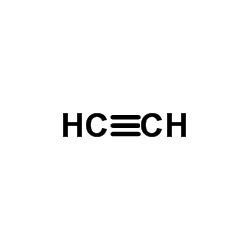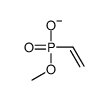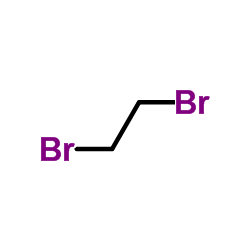4645-32-3
| Name | dimethyl vinylphosphonate |
|---|---|
| Synonyms |
1-dimethoxyphosphorylethene
Dimethyl Vinylphosphonate |
| Density | 1.13 |
|---|---|
| Boiling Point | 197ºC |
| Melting Point | <-30°C |
| Molecular Formula | C4H9O3P |
| Molecular Weight | 136.08600 |
| Flash Point | 101ºC |
| Exact Mass | 136.02900 |
| PSA | 45.34000 |
| LogP | 1.61580 |
| Appearance | liquid | colorless |
| Index of Refraction | n20/D 1.428 |
| Storage condition | 2-8°C |
| Stability | store cold |
| Water Solubility | Fully miscible in water. |
|
Section 1: Product Identification Chemical Name:Vinylphosphonic acid dimethyl ester, min. 90% CAS Registry Number:4645-32-3 Formula:CH2=CHP(O)(OCH3)2 EINECS Number:225-076-4 Chemical Family:organic phosphonic acid Synonym:Dimethylvinylphosphonate;1-dimethoxyphosphorylethylene; Ethenylphosphonic acid dimethyl
Section 2: Composition and Information on Ingredients IngredientCAS NumberPercentACGIH (TWA)OSHA (PEL) Title compound4645-32-3100%no datano data Section 3: Hazards Identification Emergency Overview:Harmful by inhalation and if swallowed. Corrosive to skin, eyes and respiratory tract. Causes burns. Primary Routes of Exposure:Ingestion, inhalation, skin, eyes Eye Contact:Severe corrosive to eyes. Exposure can lead to permanent eye damage. Skin Contact:Harmful in contact with skin. Causes burns. Contact can lead to redness, pain, blistering and scar formation. Harmful by inhalation. Material is extremely destructive to the tissue of the mucous membranes and Inhalation: respiratory tract. Ingestion:Harmful if swallowed. Causes burns to the mouth, throat and stomach. Acute Health Affects:Harmful by inhalation and if swallowed. Corrosive to skin, eyes and respiratory tract. Causes burns. Repeated or prolonged exposure to spray mist may produce respiratory tract irritation leading to frequent Chronic Health Affects: attacks of bronchial infection. NTP:No IARC:No OSHA:No SECTION 4: First Aid Measures Immediately flush the eyes with copious amounts of water for at least 10-15 minutes. A victim may need Eye Exposure: assistance in keeping their eye lids open. Get immediate medical attention. Wash the affected area with water. Remove contaminated clothes if necessary. Seek medical assistance if Skin Exposure: irritation persists. Remove the victim to fresh air. Closely monitor the victim for signs of respiratory problems, such as difficulty Inhalation: in breathing, coughing, wheezing, or pain. In such cases seek immediate medical assistance. Seek medical attention immediately. Keep the victim calm. Give the victim water (only if conscious). Induce Ingestion: vomiting only if directed by medical personnel. SECTION 5: Fire Fighting Measures Flash Point:208.4°F Autoignition Temperature:no data Explosion Limits:no data Extinguishing Medium:carbon dioxide, dry powder or foam If this product is involved in a fire, fire fighters should be equipped with a NIOSH approved positive pressure Special Fire Fighting Procedures: self-contained breathing apparatus and full protective clothing. Hazardous Combustion andIf involved in a fire, this material may emit toxic and corrosive fumes. Decomposion Products: Unusual Fire or Explosion Hazards: No unusual fire or explosion hazards. SECTION 6: Accidental Release Measures Ensure adequate ventilation and wear respiratory protection. Small spills can be mixed with vermiculite, Spill and Leak Procedures:sodium carbonate or other suitable non-combustible adsorbent and swept up. Place in adequate container for disposal. Do not let material enter drains. SECTION 7: Handling and Storage Handling and Storage:Store cold, in a tightly sealed container. Keep away from heat and direct sunlight. SECTION 8: Exposure Controls and Personal Protection Eye Protection:Always wear approved safety glasses when handling a chemical substance in the laboratory. Skin Protection:Wear protective clothing and gloves. Ventilation:Handle the material in an efficient fume hood. If ventilation is not available a respirator should be worn. The use of respirators requires a Respirator Respirator: Protection Program to be in compliance with 29 CFR 1910.134. Ventilation:Handle the material in an efficient fume hood. Additional Protection:No additional protection required. SECTION 9: Physical and Chemical Properties Color and Form:colorless liq. Molecular Weight:136.1 Melting Point:no data Boiling Point:197-202°C Vapor Pressure:no data Specific Gravity:1.146g/cm3 (20°C) Odor:none Solubility in Water:soluble SECTION 10: Stability and Reactivity Stability:air and moisture stable (store cold) Hazardous Polymerization:no hazardous polymerization Conditions to Avoid:none Incompatibility:strong bases, oxidizing agents and fine powder metals Decomposition Products:carbon monoxide, carbon dioxide and phosphorus oxides. SECTION 11: Toxicological Information RTECS Data:No information available in the RTECS files. Carcinogenic Effects:no data Mutagenic Effects:no data Tetratogenic Effects:no data SECTION 12: Ecological Information Ecological Information:No information available SECTION 13: Disposal Considerations Disposal:Dispose of according to local, state and federal regulations. SECTION 14: Transportation Shipping Name (CFR):Corrosive liquid, Acidic, Organic, N.O.S. Hazard Class (CFR):8 Additional Hazard Class (CFR):NA Packaging Group (CFR):III UN ID Number (CFR):UN# 3265 Shipping Name (IATA):Corrosive liquid, Acidic, Organic, N.O.S. Hazard Class (IATA):8 Additional Hazard Class (IATA):NA Packaging Group (IATA):III UN ID Number (IATA):UN# 3265 SECTION 15: Regulatory Information TSCA:Listed in the TSCA inventory SARA (Title 313):Not reportable under SARA313. Second Ingredient:none SECTION 16 - ADDITIONAL INFORMATION N/A |
| Symbol |

GHS05 |
|---|---|
| Signal Word | Danger |
| Hazard Statements | H314 |
| Precautionary Statements | P280-P305 + P351 + P338-P310 |
| Personal Protective Equipment | Faceshields;full-face respirator (US);Gloves;Goggles;multi-purpose combination respirator cartridge (US);type ABEK (EN14387) respirator filter |
| Hazard Codes | C |
| Risk Phrases | R22;R45 |
| Safety Phrases | S45-S53 |
| RIDADR | UN 3265 8/PG 3 |
| WGK Germany | 1 |
| Packaging Group | III |
| Hazard Class | 6.1 |
| HS Code | 2931900090 |
|
~88% 
4645-32-3 |
| Literature: BASF SE Patent: US2010/121092 A1, 2010 ; Location in patent: Page/Page column 6 ; |
|
~91% 
4645-32-3 |
| Literature: Agency of Industrial Science and Technology; Tanaka; Masato Patent: US6111127 A1, 2000 ; |
|
~92% 
4645-32-3 |
| Literature: Shi, Min; Yamamoto, Kiichi; Okamoto, Yoshiki; Takamuku, Setsuo Phosphorus, Sulfur and Silicon and the Related Elements, 1991 , vol. 60, # 1.2 p. 1 - 14 |
|
~% 
4645-32-3 |
| Literature: Hoechst Aktiengesellschaft Patent: US4493803 A1, 1985 ; |
|
~% 
4645-32-3 |
| Literature: Hoechst Aktiengesellschaft Patent: US4493803 A1, 1985 ; |
|
~% 
4645-32-3 |
| Literature: Kolesnikow et al. Vykosomol. Soedin.Chem.Abstr., 1959 , vol. 1, p. 367,370 Vykosomol. Soedin.Chem.Abstr., 1960 , p. 7214 |
|
~% 
4645-32-3 |
| Literature: Callot,H.J.; Benezra,C. Canadian Journal of Chemistry, 1970 , vol. 48, p. 3382 - 3387 |
|
~% 
4645-32-3 |
| Literature: Shi, Min; Yamamoto, Kiichi; Okamoto, Yoshiki; Takamuku, Setsuo Phosphorus, Sulfur and Silicon and the Related Elements, 1991 , vol. 60, # 1.2 p. 1 - 14 |
| HS Code | 2931900090 |
|---|---|
| Summary | 2931900090. other organo-inorganic compounds. VAT:17.0%. Tax rebate rate:13.0%. Supervision conditions:AB(certificate of inspection for goods inward,certificate of inspection for goods outward). MFN tariff:6.5%. General tariff:30.0% |










